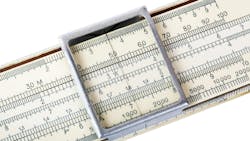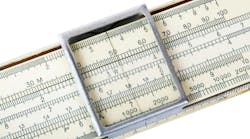Even in a Digital World, Analog Multipliers are Still Relevant
What you’ll learn:
- Applications for analog multipliers.
- How analog multipliers are described and specified.
- Who makes analog multipliers?
In a digital world, why bother with analog? Well, sometimes it can still be the right solution. Take, for instance, the analog multiplier (see figure). At its simplest, it’s a circuit that leverages two analog signals and produces an output which is their product. The same circuitry can also be used to generate squares and square roots that could be employed in an analog computer.
Digital circuits are typically inexpensive, adaptable, and reliable. In most cases, digital multipliers offer better accuracy and flexibility, and they’re more suitable for complex calculations due to their ability to handle larger dynamic ranges and higher precision.
However, you might still select an analog multiplier instead of a digital multiplier when you need to perform multiplication on continuously varying analog signals at high frequencies. Here, the speed and simplicity of an analog circuit might be advantageous, especially if high precision isn't critical and you can tolerate a bit of noise or distortion.
Key Points When Deciding Between Analog and Digital
- Speed: Analog multipliers can be significantly faster for high-frequency applications, as they directly process continuous signals without the need for analog-to-digital conversion.
- Cost: In certain situations, a simple analog multiplier circuit is cheaper to implement than a complex digital multiplier, especially for low-precision applications.
Typical Applications for Analog Multipliers
- RF signal processing: For operations like modulation and demodulation, where high-speed signal manipulation is crucial.
- Power measurement: Calculating instantaneous power by multiplying voltage and current signals.
- Phase detection: Measuring phase differences between signals.
What Do You Need to Understand About Analog Multipliers?
An analog multiplier isn’t the same thing as a voltage-controlled amplifier, though it can be configured to function as such. For example, if a steady state voltage is provided as one of the inputs, naturally, the second input will be scaled in proportion to the steady-state voltage.
>>Download the PDF of this article
Analog multipliers deliver an output voltage or current proportional to the product of multiple current or voltage inputs. They can perform several mathematical functions including multiplication, modulation and log functions, dividing, squaring, and even calculating square roots—all in real-time.
Relative to Cartesian coordinates, analog multipliers are classified based on how many quadrants are required to describe its operation. For instance, a one-quadrant multiplier applies to a circuit in which each input and output signal share the same polarity. Four-quadrant multipliers permit any polarity on inputs or outputs. And two-quadrant multipliers describe a device or circuit where the output can be positive or negative, and one input is a given polarity while the other can be of either polarity.
The other most relevant descriptor of an analog multiplier is its accuracy, usually defined at “room temperature” with a nominal supply voltage.
Analog-multiplier integrated circuits find homes in many applications, e.g., delivering an RMS converter. General-purpose analog-multiplier ICs often incorporate attenuators or even amplifiers at both input and output. This permits scaling of the signal to within the voltage limits for a given circuit. One common, general-purpose “building block” is the linear four-quadrant multiplier integrated circuit.
No one said analog multipliers were “simple.” For manufacturers, it can be challenging to produce widely applicable, general-purpose multipliers. Production may require additional steps like laser trimming to ensure accurate performance. This adds up to higher costs.
Who Makes Analog Multipliers?
Occasionally, multipliers are still built from discrete components, but many IC options are available, manufactured by several different sources. Three examples are described below:
- Analog Devices provides some good information on multiplier basics, on the differences between two- and four-quadrant multipliers, as well as advice on using multipliers in combination with other devices and circuits.
- Renesas offers the HA-2556, a monolithic, high-speed, four-quadrant analog multiplier constructed in the Intersil Dielectrically Isolated High Frequency Process. The voltage output simplifies many designs by eliminating the current-to-voltage conversion stage required for current output multipliers. The HA-2556 features a 450-V/µs slew rate and maintains 52- and 57-MHz bandwidths for the X and Y channels, respectively, making it, according to the company, an ideal part for use in video systems.
- Texas Instruments manufactures several analog multipliers. Among them is the MPY634, which the manufacturer describes as a wide-bandwidth, high-accuracy, four-quadrant analog multiplier with accurately laser-trimmed multiplier characteristics. As such, according to TI, it’s easy to use in a wide variety of applications with a minimum of external parts, often eliminating all external trimming. Its differential X, Y, and Z inputs allow for configuration as a multiplier, squarer, divider, square-rooter, and other functions while maintaining high accuracy.
What Are Some Final Considerations?
Analog multipliers are still unusual choices, but with some renewed interest in analog computing, this technology may yet again become mainstream. Take a look at some of the references and articles mentioned in this article for more ideas.
References
“Application of analog multiplier in industrial electrical engineering,” Journal of Industrial Electrical Engineering.
“10MHz Analog Multiplier Carries Output Map, Breaks Bandwidth Barrier,” Texas Instruments.
>>Download the PDF of this article
About the Author



